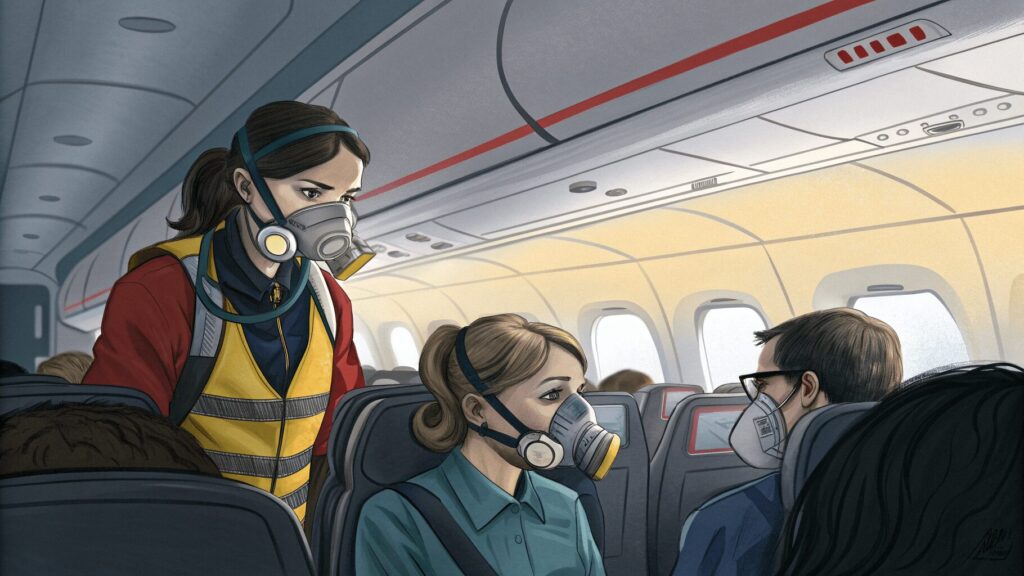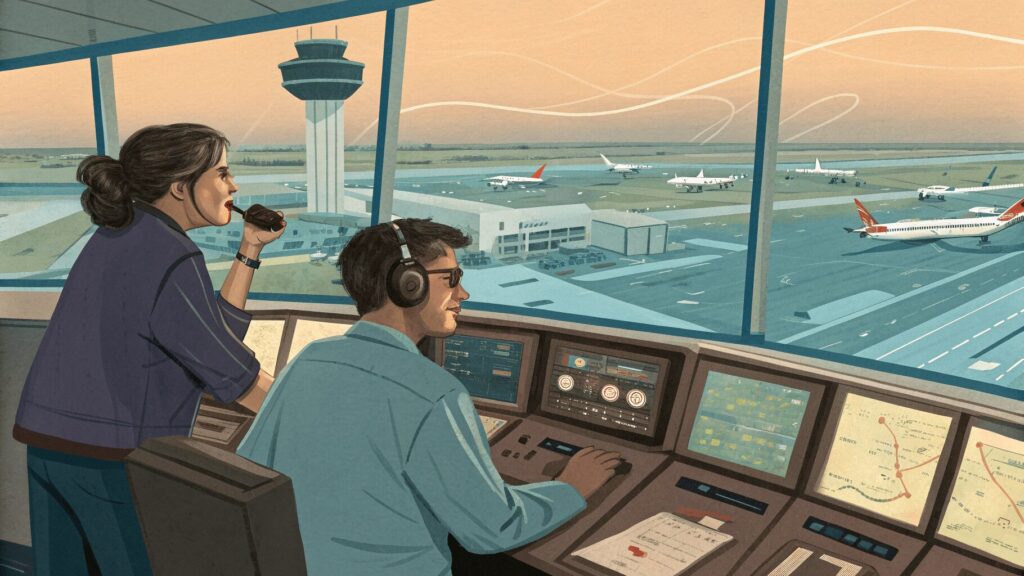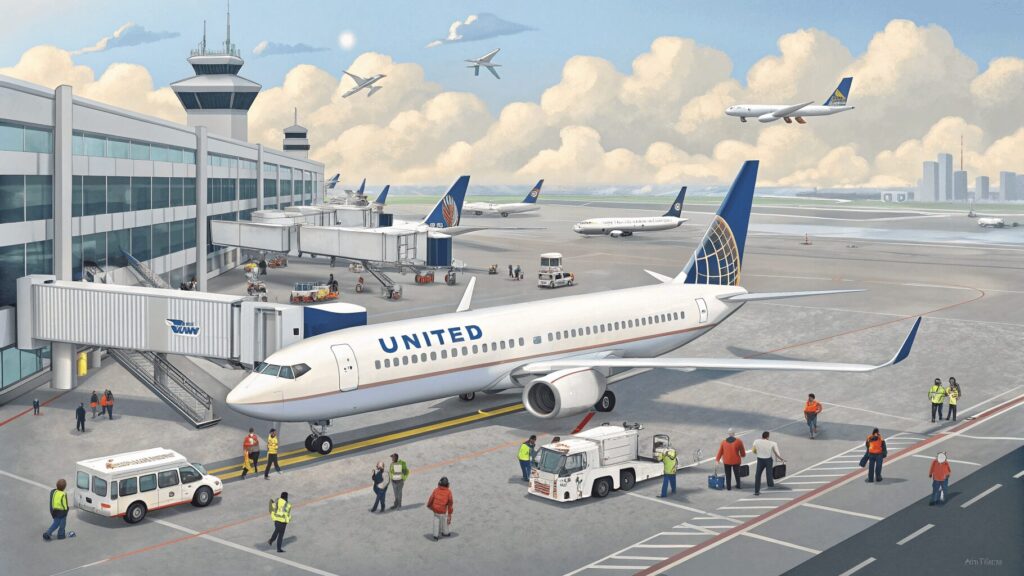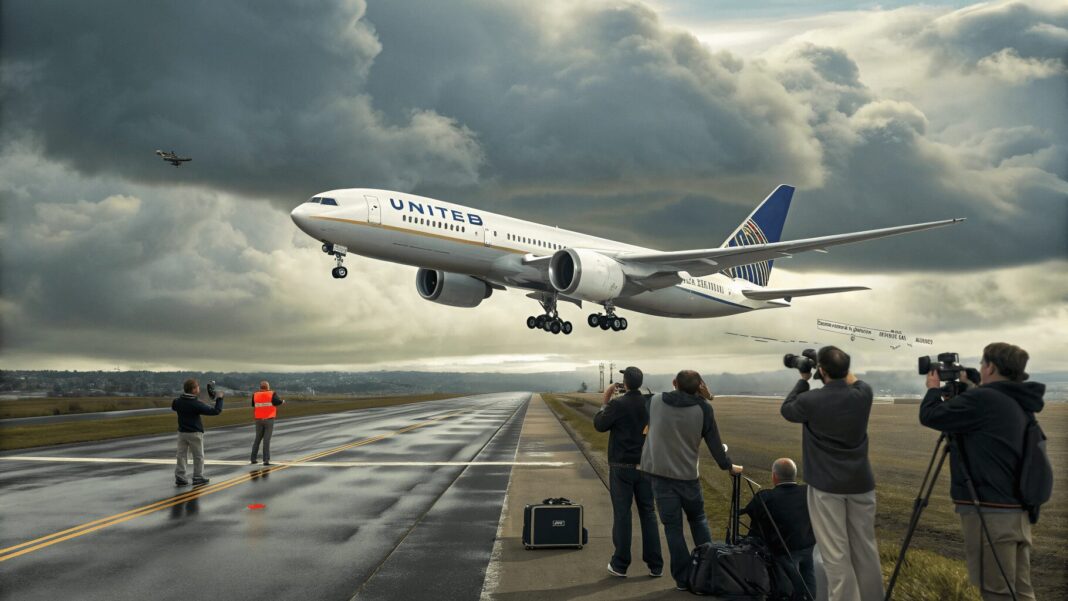United Airlines Flight UA770 became the center of attention after news spread that it had to make an emergency diversion. The incident raised many questions about what happened on board, how the airline handled the situation, and what passengers experienced. Flight diversions are not common, so when they do happen, they naturally gain public interest.
The emergency diversion of UA770 shows the unpredictability of air travel. Even with modern technology and strict safety checks, unexpected events can take place. This situation reminds us of the importance of airline safety protocols and the role of trained crew members.
Table of Contents
- 1 Details of the Emergency Diversion
- 2 Possible Causes Behind the Diversion
- 3 Passenger Experience During the Incident
- 4 Airline Crew’s Response and Safety Protocols
- 5 Official Statements from United Airlines
- 6 Airport and ATC Role in Handling the Situation
- 7 Impact on Flight Schedule and Passengers
- 8 How Airlines Manage Mid-Air Emergencies
- 9 Lessons Learned from the UA770 Diversion
- 10 Comparison with Similar Past Incidents
- 11 Public and Media Reactions
- 12 Safety Reputation of United Airlines
- 13 Future Preventive Measures
- 14 Conclusion: What UA770 Tells Us About Air Travel Safety
- 15 FAQs
- 15.1 What was the reason for the UA770 diversion?
- 15.2 Were passengers on UA770 safe during the emergency?
- 15.3 How do airlines handle mid-air emergencies?
- 15.4 Did United Airlines release an official statement?
- 15.5 What happens to passengers after a flight diversion?
- 15.6 Are emergency diversions common in aviation?
- 15.7 Which airport did UA770 land at after diversion?
- 15.8 Does this incident affect United Airlines’ safety record?
- 15.9 What role does air traffic control play in diversions?
- 15.10 Can passengers claim compensation after such incidents?
Details of the Emergency Diversion
Flight UA770 was scheduled to travel on its regular route when a technical issue forced the aircraft to divert. Reports suggest that the plane may have faced a possible pressurization problem, which made it unsafe to continue the journey as planned. To protect everyone on board, the flight crew decided to land at the nearest suitable airport.

Emergency diversions are carried out when there is no other option for safety. In the case of UA770, the landing was made without any injuries, and passengers were safely taken care of. The situation caused delays, but safety was prioritized over convenience.
Possible Causes Behind the Diversion
While the exact technical cause has not been officially confirmed, experts believe that the issue may have been linked to the aircraft’s cabin systems or mechanical functions. In aviation, even a small fault can become serious if ignored, which is why pilots and airlines act quickly.
Some sources suggest a cabin pressurization alert, while others mention general mechanical concerns. In either case, the decision to divert the plane was a precautionary step. Airlines are trained to never take risks with passenger safety, even if the issue seems minor.
Passenger Experience During the Incident
Passengers on board UA770 described the incident as unexpected and stressful. Some reported hearing announcements from the captain explaining the diversion. Although there was concern, most travelers remained calm because of the professionalism of the flight attendants.
For many passengers, the main difficulty was the sudden change in their travel plans. Delays, rebooked flights, and waiting at the diversion airport caused inconvenience. However, passengers also appreciated that safety came first, and most expressed relief once the plane landed safely.
Airline Crew’s Response and Safety Protocols
The cabin crew and pilots of UA770 followed strict emergency protocols. Flight attendants reassured passengers, explained the situation, and made sure everyone remained calm. The pilots communicated with air traffic control to arrange a safe and fast landing at the diversion airport.
Airline crews are trained regularly for such situations. From emergency drills to technical awareness, they know how to act quickly under pressure. Their training played a big role in keeping passengers safe and comfortable during the UA770 diversion.
Official Statements from United Airlines
United Airlines released a statement confirming that Flight UA770 had been diverted due to a technical issue. The airline emphasized that the diversion was a safety measure and that all passengers were safe. United also arranged support for affected travelers, including rebooking options and assistance at the diversion airport.
Official statements in such situations help reduce confusion and fear. By sharing updates quickly, airlines aim to maintain trust with passengers and the public. United Airlines stressed that safety is always their top priority, and the UA770 incident was handled according to standard procedure.
Airport and ATC Role in Handling the Situation
Air traffic control (ATC) played a crucial role in guiding UA770 to its emergency landing. Once the pilots declared an emergency, controllers cleared a path for the aircraft and gave it priority over other flights. This ensured the plane could land without delay.

The diversion airport also prepared for the arrival. Ground staff, emergency teams, and support services were ready to assist as soon as the plane landed. Their coordination with the airline helped passengers disembark safely and receive further instructions.
Impact on Flight Schedule and Passengers
The diversion of UA770 caused delays not only for the passengers on board but also for the airline’s overall schedule. Connecting flights had to be adjusted, and some passengers missed important appointments. Airlines often provide meal vouchers, hotel stays, or rebooked tickets in such cases.
Though delays are frustrating, most passengers understand that safety comes first. In the case of UA770, the disruption was seen as a necessary step, and United Airlines worked to minimize the impact on travelers.
How Airlines Manage Mid-Air Emergencies
Airlines like United have a strict set of rules for handling emergencies. When an issue occurs, the pilots assess the risk, declare an emergency if needed, and follow instructions from ATC. Flight attendants ensure passengers stay calm and prepared.
Emergency diversions are practiced during pilot training. This means the crew knows exactly how to manage the process, from lowering altitude if cabin pressure is affected to preparing for landing. These steps ensure that emergencies, though rare, are managed safely.
Lessons Learned from the UA770 Diversion
The UA770 diversion teaches passengers and airlines an important lesson: preparedness saves lives. Even when unexpected problems occur, the right response can prevent tragedy. Passengers saw how quickly the crew acted, and many realized the importance of listening to safety instructions.
For the airline, such incidents highlight the need for continuous technical checks and training. No system is perfect, but with quick decisions and teamwork, risks can be minimized. UA770 showed that safety procedures truly work in real situations.
Comparison with Similar Past Incidents
Emergency diversions are not unique to UA770. Airlines around the world have faced similar situations. In most cases, diversions are caused by medical emergencies, technical alerts, or weather conditions. While stressful, they are almost always carried out safely.
By comparing past diversions, aviation experts can improve training and systems. Every incident adds to the knowledge base, helping airlines handle future situations more smoothly. UA770 is now one of those cases that will be studied for better preparedness.
Public and Media Reactions
When news of UA770’s emergency diversion spread, it quickly caught the attention of travelers and aviation enthusiasts. Some people expressed concern, while others praised the crew for their professionalism. Online discussions also raised questions about aircraft safety and airline reliability.
The media focused on the dramatic aspect of the story but also highlighted that no injuries occurred. Most coverage emphasized that the situation was handled correctly, which helped maintain trust in United Airlines.
Safety Reputation of United Airlines
United Airlines is one of the largest carriers in the world, and like all major airlines, it follows strict safety regulations. While incidents like UA770 gain media attention, they are rare compared to the millions of safe flights the airline operates each year.

United continues to invest in crew training, aircraft maintenance, and passenger safety programs. The UA770 diversion may have been inconvenient, but it also proved that the airline’s safety measures are effective.
Future Preventive Measures
After every emergency diversion, airlines review what happened and how it was handled. In the case of UA770, United may increase technical checks on similar aircraft models and update training programs for staff. Preventive steps like these reduce the chances of similar incidents.
For passengers, the lesson is to remain calm, follow instructions, and trust the airline crew. Emergencies cannot always be avoided, but preparedness ensures the best possible outcome.
Conclusion: What UA770 Tells Us About Air Travel Safety
The emergency diversion of United Airlines Flight UA770 reminds us that air travel, while highly safe, can still face unexpected challenges. What matters most is how quickly and effectively the crew responds. In this case, the correct decisions were made, and all passengers remained safe.
While delays and inconveniences occurred, the diversion showed that safety comes before everything else. The UA770 incident will be remembered as an example of successful emergency management in modern aviation.
FAQs
What was the reason for the UA770 diversion?
UA770 diverted because of a technical issue, possibly linked to cabin pressurization or another mechanical concern.
Were passengers on UA770 safe during the emergency?
Yes, all passengers and crew were safe. The diversion was done only as a precaution.
How do airlines handle mid-air emergencies?
Pilots declare an emergency, follow safety procedures, and coordinate with air traffic control to land safely.
Did United Airlines release an official statement?
Yes, United Airlines confirmed the diversion, explained it was for safety, and assured passengers were safe.
What happens to passengers after a flight diversion?
Passengers are assisted with rebooking, meals, or accommodation depending on the delay caused.
Are emergency diversions common in aviation?
They are rare compared to daily flights, but airlines are well-prepared when they happen.
Which airport did UA770 land at after diversion?
Reports suggest it landed at the nearest suitable major airport, depending on its route.
Does this incident affect United Airlines’ safety record?
No, safety records remain strong. Such diversions show the system works to protect passengers.
What role does air traffic control play in diversions?
ATC clears airspace, gives priority landing, and guides the aircraft safely to the ground.
Can passengers claim compensation after such incidents?
Compensation depends on airline policy and local regulations. In most cases, assistance is offered.
Related Post:

